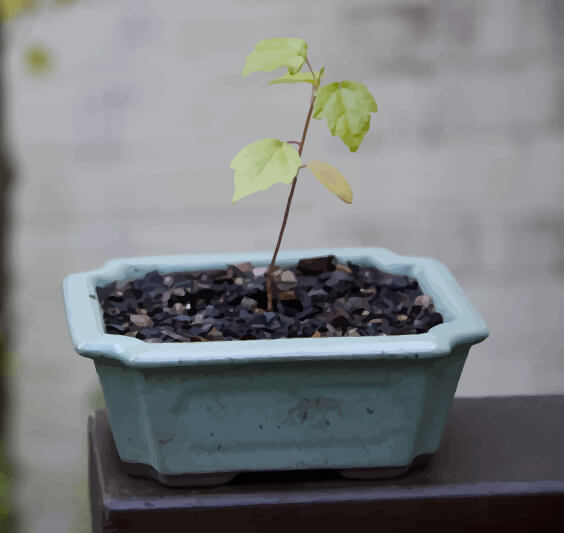Propagating Bonsai from Seed
Growing trees or shrubs from seed will give you many seedlings, but needs much time and space. You are not “growing bonsai”, only cultivating material that may, after several years, be suitable for training into bonsai.

First, ensure the required species is one that can be readily propagated from seed. Tree seeds must be fresh to germinate, even if stored at a suitable humidity and temperature. Collect the seeds yourself, or buy them from a good seed merchant. “Bonsai kits” are an unreliable and costly way of buying seeds.
Many hardy tree seeds need a period of cold to germinate. A refrigerator or freezer provides this for sowings out of season in, say, midsummer, but such seedlings may be too immature to survive a winter. Sow seed in early autumn or winter and expose it to cold weather, but protect it from birds and rodents.
Stratified Seeds
Some seeds need stratification before sowing. Bury them in pots of wet sand, then either expose to frost or place in plastic bags in a refrigerator for some months. Soak seeds with hard husks or shells in water: viable seeds sink. Discard empty shells that float. A few drops of detergent in the water prevent viable smaller seeds from floating.
Pines Grown from Seed
The illustrations show Pinus parviflora, the Japanese white pine. If you have collected the pine cones, leave them in a warm room for a few days to open. Then remove the seeds and soak them.
Pines are usually propagated from seed or by grafting, rather than from cuttings as their high resin content inhibits callousing. Grafting
is often preferable, because seedlings do not always come true to the parent plant; however, the rootstocks for grafting still have to be propagated by seed.
The process of developing the seedling into material suitable for training as bonsai is shown on p. 136. If you require a small bonsai, grow the tree on in a pot, transplanting it into larger-sized pots as necessary. For a large bonsai with a heavy trunk, allow the young tree to develop in open ground.
Sowing the Seeds
- Fill a seed tray with a suitable soil mixture for seeds. For pines, this consists of one part perlite to one part peat moss.
- Make furrows in the surface so that the seeds can be sown evenly. Sprinkle a fine layer of sand over the soil first to make the seeds more visible.
- Place the seeds in the furrows, spacing them equally.
- Cover the surface of the soil with coarse grit to evenly. The distance between seeds depends on their depth of just less than twice the size of the seed, size: the larger the seed, the wider the spacing. Water well and place the tray in the open.
Transplanting Seedlings
A seedling transplanted into open ground after its first year will grow more quickly into a tree suitable for bonsai. If this is not possible, pot the seedling up into a 3 inches (7.5 cm) plastic pot filled with free-draining soil mix. Spread the roots carefully into a wheel-spoke pattern to prevent them from tangling as they thicken, and to encourage a radial root system. Pot on annually to allow space for growing roots.
- After leaving the seedlings undisturbed for a year, lift them carefully from the tray by gently working loose their long, straggly roots.
- In order to encourage the growth of more and finer roots at the base of the stem, trim back the tap root and other long roots, but avoid cutting the fine, fibrous roots close to the stem.
- Leave each potted-up seedling to grow on unrestricted for a number of years. This will allow it to become established, as well as enable the trunk to thicken and the branch structure to develop.



Leave a Reply